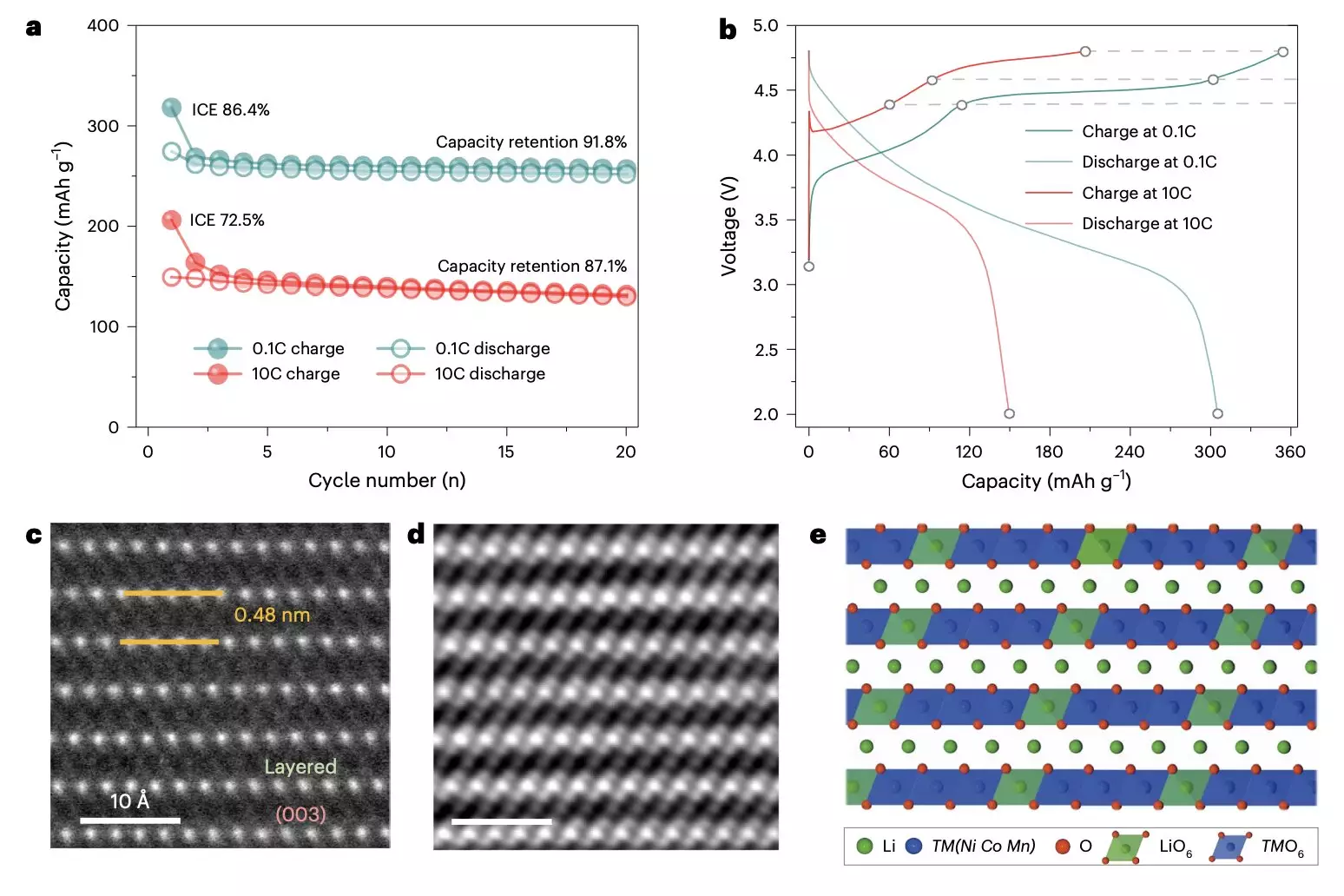Recent advancements in battery technology are crucial for the future of energy storage and consumption. As the demand for efficient energy solutions escalates—particularly with the rise of electric vehicles (EVs) and portable electronics—researchers have challenged themselves to innovate in battery chemistry. Specifically, attention has shifted toward enhancing the performance of lithium-based batteries, which dominate the market due to their energy density and rechargeability. However, understanding the intricacies of battery materials can lead to improvements in longevity and overall effectiveness.
At the heart of battery performance lies the cathode, the electrode responsible for electron reception during discharge. Research has identified layered lithium-rich transition metal oxides as promising candidates for next-generation cathode materials. Their layered structures not only allow for efficient lithium ion movement but also enable greater energy storage capacity. By integrating transition metals such as manganese, cobalt, and nickel, these materials contribute significantly to the electrochemical reactions fundamental to energy production.
Despite these advantages, a critical limitation persists: many of these layered cathodes exhibit significant degradation under operational conditions. The rapid loss of voltage and overall efficiency poses a challenge for their application in high-performance batteries. Researchers are urgently seeking to understand the degradation mechanisms to pave the way for sustainable battery technologies.
In their pursuit of understanding these challenges, a team from Sichuan University and other global institutions has conducted comprehensive studies focusing on the degradation pathways of lithium-rich cathodes. Their research, published in *Nature Nanotechnology*, integrates multiple analytical approaches to investigate the structural and chemical factors contributing to battery performance issues. This multilayered examination seeks to bridge the gap between nanoscale behaviors and macroscale performance, providing insights that could advance the field of battery technology.
The study reveals significant findings regarding how operational stresses influence cathode stability. Using advanced imaging techniques, including energy-resolved transmission X-ray microscopy, researchers have visualized crucial nanostructural changes within the cathodes during operation. Such high-resolution observations are instrumental in identifying defects in oxygen and other structural distortions that arise even during initial charging cycles.
The research identifies that defects formed during early charging can have progressive implications, resulting in structural transformations within the battery’s composition. For instance, slow electrochemical activation contributes to the formation of nanovoids and the dissolution of transition metal ions, signaling potential collapse of the cathode architecture. The presence of these defects highlights the intricate dynamics of lithium intercalation and stresses the need for materials that can handle the rigors of repeated charge-discharge cycles.
An intriguing aspect of the findings is the identification of “inhomogeneous” structural changes, which lead to detrimental effects on battery lifespan. These alterations cause not only lower initial efficiency but also continued degradation during subsequent charging cycles—posing hurdles for both manufacturers and consumers alike.
The research conducted adds critical layers of understanding to existing knowledge regarding lithium-rich cathodes. By detailing ways in which oxidative and structural changes can be managed, there is potential for developing more resilient materials that can extend the lifespan and efficiency of batteries. Moving forward, engineers and chemists can leverage these insights to innovate methods that will enhance cathode performance, thereby fulfilling consumer demands for longer-lasting and faster-charging batteries.
While the promise of layered lithium-rich transition metal oxides as improved cathode materials is substantial, the pathway to realizing their potential is complicated by degradation phenomena. Further research will undoubtedly contribute to overcoming these obstacles, positioning these advanced materials as key components in the next wave of battery technology. As the energy landscape continues to evolve, the insights gained from comprehensively studying these materials will remain vital in shaping sustainable energy solutions for the future.

